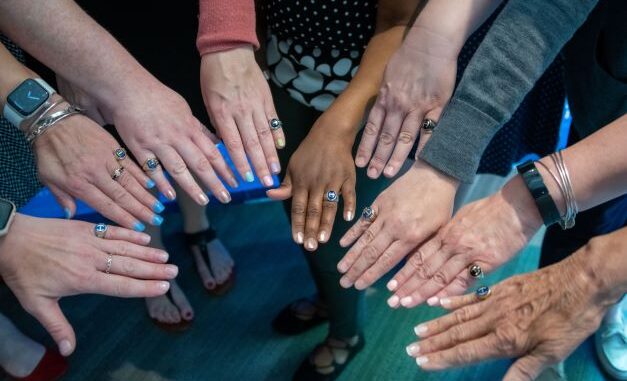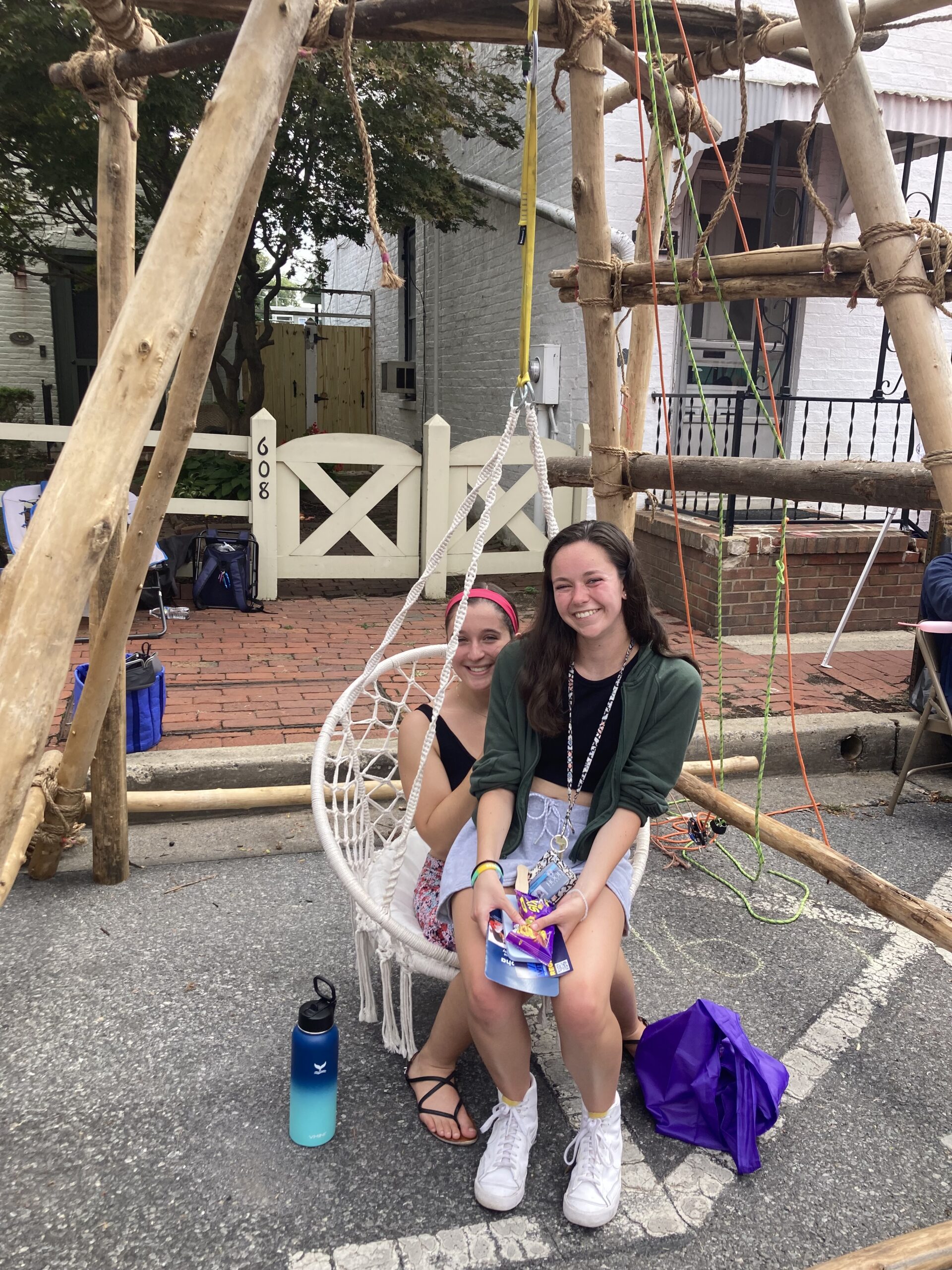
By Dee Richardson & Aden Sievert//
The Hood ring is a tangible symbol of endurance and accomplishment that is celebrated annually, but the celebration of this tradition has become quieter throughout the years.
“We want to see more rings on hands,” said Vice President for Institutional Advancement Nancy Gillece ’81. Gillece herself wears her class ring, a black stone with a gold band, and her class year of 1981 engraved on the outside of the ring.
When she attended Hood, it was unusual to not have a class ring. Almost every upperclassman had their class ring on their pinky, but nowadays, it’s more common to see someone without a ring rather than with one.
Director of Alumni and Constituent Engagement Kellye Greenwald agreed with Gillece’s statements. Greenwald also sports her class of ’86 ring proudly and wishes for Hood students to share the same sentiment.
According to both Greenwald and Gillece, there is an inventory full of Hood alum rings that they are eager to give to students. Through legacy rings, students can network and foster connections outside of Hood that could be extremely beneficial. There is a ring ceremony every year in the spring for students who received a legacy ring and for those that purchased a class ring.
While this tradition and fund is primarily run by Hood alums, this is not a tradition that can continue without the support of students, both Greenwald and Gillece emphasize.
Student Government Association (SGA) President Hannah Armstrong agrees that this is an important tradition to continue, but said there need to be more accessible opportunities for upperclassmen. “It’s not a matter of not wanting to, but a matter of finances,” Armstrong said.
The starting price of class rings is $599, with the most expensive ring being $1,078. For some, the scholarship only covers a portion of their desired ring design.
For other students, their degrees or certificates are tangible accomplishments, which outweigh getting a ring to memorialize their time at Hood.
Armstrong offers the solution of providing more social events to promote the rings, which would help bring more attention to the class rings and hopefully rejuvenate the interest in purchasing a ring. The only notification is through email, with the addition of ring sizing available in Whitaker Campus Center and Coblentz Dining Hall. There’s little to no other promotion of class rings.
The tradition of the Hood ring started after 1925 with a committee of Hood alumnae and students. Through this committee, they were able to decide on the design of the letter “H” on the center of a blue or black oval stone. The committee was also able to design a men’s signet ring in 2010, according to Hood’s website.
Traditionally, the ring is worn on the left pinky finger until marriage, and then moved to the right pinky finger after marriage. According to Hood’s website, students are eligible for a class ring once they’ve reached a junior class status or graduate degree candidacy.
Class rings are not limited to only juniors, as seniors can also purchase rings. For those looking for opportunities to help cover the costs of class rings, Hood offers Legacy and Ring scholarships each year to eligible students.
A Legacy ring is donated by alumni and given to the student applicant who fits a similar ring size. Students may receive a ring scholarship or legacy ring based on their essay submissions. The essay must contain information about the importance of the Hood ring, how important the tradition is to them, and other requirements.



Be the first to comment